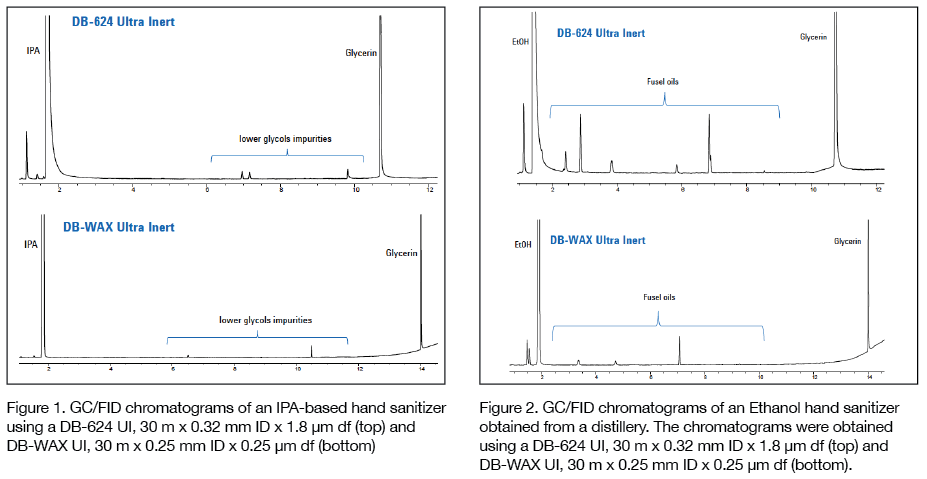Posted by Chrom Tech on 15th Oct 2025
Ethanol and Isopropanol Analysis in Hand Sanitizers by GC/FID
The global demand for hand sanitizers surged during the COVID-19 pandemic as individuals and organizations prioritized hygiene and infection prevention. As consumer demand increased, laboratories and chemical manufacturers began using their ethanol and isopropanol supplies to help meet sanitizer shortages. Analytical testing by gas chromatography (GC) with flame ionization detection (FID) ensures that these formulations meet purity and safety standards for consumer use.
Why Alcohol Testing Matters in Hand Sanitizers
Alcohol-based hand sanitizers rely on isopropanol (IPA) or denatured ethanol as their main active ingredients. Effectiveness depends heavily on alcohol concentration, which must align with regulatory guidelines such as those from the U.S. Food and Drug Administration (FDA) and World Health Organization (WHO).
Accurate quantification of these alcohols ensures proper disinfectant efficacy while verifying that impurities—such as acetone, methanol, or other fusel oils—remain within allowable limits. Gas Chromatography with FID detection provides the selectivity, precision, and reproducibility necessary for this analysis.
Recommended GC Columns for Alcohol Analysis
Chrom Tech recommends columns designed for resolving volatile alcohols and related impurities with excellent peak shape and stability. The following Agilent J&W columns are particularly effective:
- Agilent DB-624 UI — Ideal for high water-alcohol matrices, capable of separating IPA, ethanol, acetaldehyde, and fusel oils with high precision.
- Agilent DB-WAX UI — Provides superior resolution and quantitative accuracy for alcohol components, minimizing carryover and column bleed for cleaner results.
Both columns are engineered with Ultra Inert technology for long-term stability, enabling accurate quantification of ethanol and isopropanol even in challenging, high-moisture samples like hand sanitizers.
Best Practices for GC/FID Hand Sanitizer Analysis
When performing GC/FID analysis of alcohol-based sanitizers, keep the following guidelines in mind:
- Sample Preparation: Dilute the sanitizer appropriately to fall within the instrument’s linear range.
- Column Conditioning: Pre-condition your column before analysis to remove any volatile contaminants.
- Instrument Calibration: Use certified reference standards for ethanol, isopropanol, and potential impurities to ensure accuracy.
- Detector Settings: Optimize flame ionization parameters for low noise and strong sensitivity in volatile compound detection.

Your Partner in Chromatography Solutions
Chrom Tech is a Minnesota-based, global distributor specializing in chromatography and mass spectrometry instrumentation, consumables, and supplies. Whether you’re analyzing hand sanitizer formulations or developing pharmaceutical methods, we provide the products and technical support you need to ensure precision and reliability.
We carry a full range of products including vials, well plates, syringe filters, and solvent waste containers—all in stock and ready to ship. Contact Chrom Tech today to learn how we can become your preferred chromatography supplier.
Frequently Asked Questions
Why use GC/FID for hand sanitizer testing?
GC/FID is highly sensitive for volatile organic compounds like ethanol and isopropanol. It provides accurate quantification and helps confirm that formulations meet regulatory alcohol content standards.
What GC column is best for ethanol and isopropanol analysis?
The Agilent DB-624 UI and DB-WAX UI are both excellent options for alcohol resolution, reproducibility, and long-term performance in high-moisture samples.
Can GC/FID detect impurities in sanitizer formulations?
Yes. GC/FID effectively detects impurities such as methanol, acetone, and fusel oils—helping ensure sanitizer formulations are safe and compliant.

